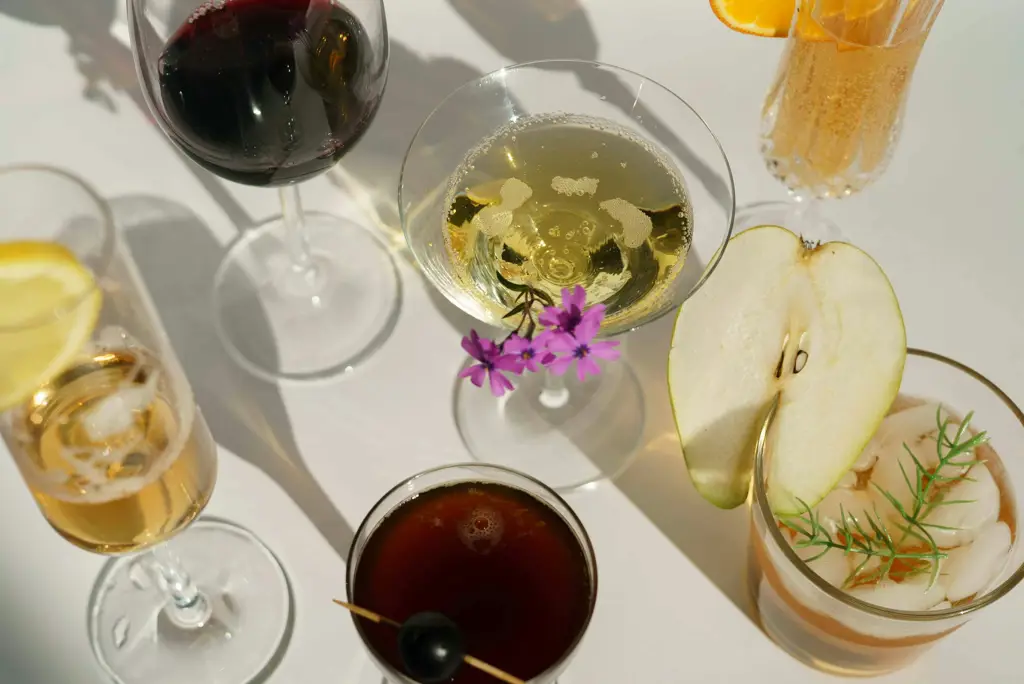Salmon, a culinary staple across the globe, boasts a rich history interwoven with human civilization. Evidence suggests that salmon fishing dates back to the Paleolithic era, with archaeological findings indicating its consumption by early humans. Its nutritional value, rich in Omega-3 fatty acids and protein, made it a crucial food source for numerous communities throughout history. Different cultures developed unique methods of preserving and preparing salmon, reflecting their distinct culinary traditions. For instance, indigenous peoples of the Pacific Northwest relied on smoking and drying techniques, while European cultures embraced salting and pickling to extend its shelf life.
The popularity of baked salmon, specifically, has seen a surge in recent years due to its simplicity and health benefits. According to a 2023 survey by the National Restaurant Association, baked salmon ranks among the top five most frequently ordered healthy dishes in upscale restaurants, demonstrating its appeal to health-conscious consumers. Its versatility also contributes to its widespread popularity; it complements a wide range of flavors and can be prepared with minimal ingredients, making it a convenient option for busy weeknights. This recipe focuses on a quick and easy approach, catering to modern lifestyles where time efficiency is paramount.
The cultural significance of salmon extends beyond its nutritional value. For many indigenous communities, particularly in North America and Asia, salmon holds deep spiritual and cultural meaning. It’s often viewed as a sacred food, symbolizing abundance and prosperity. Annual salmon runs are significant events, often celebrated through traditional ceremonies and festivities. These events highlight the importance of sustainable fishing practices and the interconnectedness between humans and the environment. The global consumption of salmon has increased dramatically over the past few decades, reaching an estimated 4 million metric tons annually, highlighting its enduring popularity as a sustainable and delicious protein source.
This recipe aims to capture the essence of delicious, healthy salmon while simplifying the cooking process. We’ll focus on a baking method that requires minimal preparation and cleanup, ensuring that even novice cooks can enjoy a restaurant-quality meal in a fraction of the time. Get ready to experience the delightful taste and nutritional benefits of this quick and easy baked salmon recipe!
Ingredients and Measurements
This recipe for Quick and Easy Baked Salmon yields two generous servings. Precise measurements are crucial for achieving optimal results, so please use a kitchen scale for the most accurate results, especially when measuring the salmon fillets.
Salmon Fillets: 2 (6-ounce) salmon fillets, skin on or off. Choose high-quality salmon fillets for the best flavor and texture. Look for fillets that are bright pink or orange in color, with firm flesh and a fresh, slightly sweet aroma. Avoid fillets that are dull, dry, or have a strong fishy smell. If using frozen salmon, ensure it’s completely thawed and patted dry before baking.
Olive Oil: 1 tablespoon. Extra virgin olive oil is recommended for its rich flavor and health benefits. Don’t substitute with other oils as they may alter the taste and cooking time. Using a tablespoon ensures the salmon is adequately lubricated without being overly greasy.
Lemon: 1/2 medium lemon, thinly sliced. The lemon slices not only add a bright, citrusy flavor but also contribute to the visual appeal of the dish. Use fresh lemon for the best flavor; bottled lemon juice is not a suitable substitute.
Garlic: 2 cloves, minced. Freshly minced garlic provides the most intense aroma and flavor. If using pre-minced garlic from a jar, use a slightly smaller amount (approximately 1 teaspoon) as it tends to be more concentrated. Avoid over-mincing the garlic, as this can release bitter compounds.
Fresh Dill: 1 tablespoon, chopped. Fresh dill complements the salmon beautifully. If fresh dill is unavailable, you can substitute with 1 teaspoon of dried dill, but remember that dried herbs are more concentrated. Choose fresh dill whenever possible for a superior flavor profile.
Salt: 1/2 teaspoon. Use kosher salt or sea salt for the best results. Table salt is more concentrated and may make the salmon too salty. Adjust the amount of salt to your preference, keeping in mind the saltiness of the salmon itself.
Black Pepper: 1/4 teaspoon, freshly ground. Freshly ground black pepper adds a subtle spiciness that enhances the overall flavor of the dish. Avoid pre-ground pepper as it loses its aroma and flavor over time.
Optional additions: Consider adding other herbs and spices such as thyme, rosemary, or paprika to customize the flavor profile to your liking. A sprinkle of red pepper flakes could also add a touch of heat.
Equipment List
Baking a perfect piece of salmon requires the right tools. While this recipe is designed for simplicity, having the correct equipment will significantly enhance your cooking experience and ensure optimal results. This list details the essential and recommended items, along with explanations for their use.
Baking Dish: You’ll need a baking dish, preferably oven-safe, to hold your salmon during baking. A 9×13 inch baking dish is ideal for multiple portions, or a smaller, individual-sized dish (approximately 8×6 inches) works perfectly for single servings. Choose a dish that’s non-reactive, such as glass, ceramic, or stainless steel to prevent any unwanted chemical reactions with the ingredients. Avoid using reactive metals like aluminum, as they can affect the flavor and color of the salmon.
Measuring Cups and Spoons: Accurate measurements are crucial for consistent results in any recipe. Invest in a reliable set of measuring cups and spoons, ideally in both metric and imperial units. For this recipe, you’ll need cups for measuring larger quantities of ingredients like lemon juice, and spoons for seasonings such as salt, pepper, and herbs. Ensure your measuring tools are clean and dry before use to avoid inaccurate measurements.
Mixing Bowls: You’ll need at least one medium-sized mixing bowl (approximately 3-quart capacity) to combine the ingredients for the simple seasoning mixture. A smaller bowl can be used for optional additions, such as chopped fresh herbs or lemon zest. Opt for bowls that are easy to clean and made from durable materials, like stainless steel or glass.
Baking Sheet (Optional): While not strictly necessary, placing your baking dish on a baking sheet provides an extra layer of protection against spills and makes it easier to transfer the dish in and out of the oven. This is particularly helpful if you’re using a glass baking dish, which can be slippery when hot. A standard 12×18 inch baking sheet is sufficient.
Spatula or Fish Turner: Once your salmon is baked, you’ll need a spatula or fish turner to carefully remove it from the baking dish. A wide, thin spatula is recommended to gently lift the salmon without breaking it. Choose a utensil with a heat-resistant handle for safe handling.
Oven: Last but not least, you’ll need an oven, of course! Ensure your oven is preheated to the correct temperature before placing the salmon inside to guarantee even cooking.
Preparation Phase: Prepping the Salmon
Before you even think about baking, proper salmon preparation is key to achieving perfectly cooked, flaky results. Start with 1 pound (450g) of skin-on or skinless salmon fillets. The choice depends on your preference; skin-on adds flavor and moisture, but skinless is easier to manage for beginners. Ensure your salmon is fresh; it should smell subtly of the sea, not fishy or ammonia-like.
Begin by rinsing the salmon fillets gently under cold running water. Pat them thoroughly dry with paper towels. This step is crucial; excess moisture will hinder browning and create a steamy environment in the oven, resulting in soggy rather than crispy skin (if using skin-on). Thoroughly drying the surface is essential for good results.
Next, consider the size and thickness of your fillets. For even cooking, aim for fillets that are roughly the same thickness. If you have uneven pieces, you can trim away any excessively thick portions or even butterfly thicker fillets to create more uniform pieces. This will ensure that all parts of the salmon cook at the same rate and prevent overcooking in some areas.
Now, let’s address seasoning. While simple seasoning works wonders, feel free to experiment. A basic recipe calls for 1 teaspoon of salt and ½ teaspoon of freshly ground black pepper per fillet. Evenly distribute the seasoning, gently pressing it into the flesh of the salmon. For enhanced flavor, consider adding other herbs and spices such as 1 teaspoon of dried dill, ½ teaspoon of paprika, or a squeeze of fresh lemon juice. Remember to season both sides of the fillet.
Finally, if using skin-on salmon, score the skin in several places with a sharp knife. This helps the skin crisp up during baking and prevents it from curling. Do not score the flesh of the salmon. Once seasoned and prepared, your salmon is ready to be baked. Remember that proper preparation significantly impacts the final taste and texture, so take your time with this crucial step.
Preparation Phase: Preparing the Sauce/Seasoning
The success of your quick and easy baked salmon hinges significantly on a flavorful and well-balanced sauce or seasoning. We’ll explore two options: a simple lemon-herb butter sauce and a zesty soy-ginger marinade. Choose the one that best suits your palate and available ingredients.
Option 1: Lemon-Herb Butter Sauce
This classic sauce elevates the salmon’s natural flavor without overpowering it. Begin by melting 4 tablespoons (57g) of unsalted butter in a small saucepan over low heat. Avoid browning the butter; you want it melted and smooth. Once melted, remove from heat and stir in 2 tablespoons of fresh lemon juice (approximately one medium lemon). Finely chop 2 tablespoons of fresh dill and 1 tablespoon of fresh parsley. Add these herbs to the butter mixture, along with a pinch of salt (about 1/4 teaspoon) and freshly ground black pepper (to taste). Taste and adjust seasoning as needed. The sauce should be bright, lemony, and herbaceous. Set aside until ready to use.
Option 2: Soy-Ginger Marinade
For a more savory and umami-rich profile, opt for this soy-ginger marinade. In a small bowl, whisk together 2 tablespoons of soy sauce (low sodium preferred), 1 tablespoon of rice vinegar, 1 tablespoon of honey or maple syrup (for sweetness), 1 tablespoon of grated fresh ginger (about a 1-inch piece), and 1 teaspoon of sesame oil. Ensure the honey or maple syrup is fully dissolved. For extra depth of flavor, consider adding a small clove of minced garlic. Taste and adjust seasonings. You can add more soy sauce for saltiness, honey for sweetness, or ginger for a spicier kick. This marinade works best if the salmon marinates for at least 15-30 minutes before baking, allowing the flavors to penetrate the fish.
Important Note: Regardless of which sauce or marinade you choose, remember that freshness is key. Using high-quality ingredients will significantly impact the final taste of your dish. Freshly squeezed lemon juice and finely chopped herbs make a world of difference. Don’t be afraid to experiment with different herbs and spices to create your own unique flavor combinations.
Cooking Techniques: Baking the Salmon
Baking salmon is a wonderfully simple and healthy way to prepare this delicious fish. This method allows for even cooking and infuses the salmon with delicious flavors. For optimal results, follow these steps carefully.
Preheating your oven is crucial. Preheat your oven to 400°F (200°C). This ensures the salmon cooks evenly and doesn’t dry out. A properly preheated oven is the foundation for perfectly baked salmon.
Preparing your salmon fillet: Start with 1 (6-ounce) salmon fillet per person. Pat the salmon fillets dry with paper towels. This helps the skin crisp up and prevents excessive steaming during baking. Removing excess moisture is key to achieving a flavorful, crispy skin.
Seasoning the salmon: Generously season both sides of the salmon fillet with salt and freshly ground black pepper. Consider adding other seasonings for extra flavor, such as paprika, garlic powder, onion powder, or a squeeze of lemon juice. Don’t be shy with the seasoning! Salmon is a robust fish that can handle bold flavors.
Baking the salmon: Place the seasoned salmon fillets on a baking sheet lined with parchment paper or foil. This prevents sticking and makes cleanup a breeze. For extra flavor and moisture, you can add a tablespoon of olive oil to the baking sheet before placing the salmon on it. Baking time depends on the thickness of your fillet; a 1-inch thick fillet will typically take 12-15 minutes, while thicker fillets may require up to 20 minutes. Use a meat thermometer to ensure the internal temperature reaches 145°F (63°C) for food safety.
Checking for doneness: The salmon is done when it flakes easily with a fork and is opaque throughout. Overbaking can result in dry, tough salmon. It’s better to slightly undercook it than overcook it. If you’re unsure, err on the side of caution and check the internal temperature with a food thermometer.
Serving your baked salmon: Once cooked, carefully remove the salmon from the oven and let it rest for a few minutes before serving. This allows the juices to redistribute, resulting in a more tender and flavorful fillet. Serve immediately and enjoy! Garnish with fresh herbs, a lemon wedge, or a drizzle of olive oil for an extra touch of elegance.
Cooking Techniques: Checking for Doneness
Perfectly cooked salmon is moist, flaky, and opaque throughout. Undercooked salmon will be translucent and potentially slimy, while overcooked salmon will be dry and tough. Mastering the art of checking for doneness is crucial for achieving delicious results every time. This section outlines several reliable methods to ensure your baked salmon reaches the ideal level of doneness.
The Flake Test: This is arguably the most reliable method. Gently insert a fork into the thickest part of the salmon fillet. If the fish flakes easily with minimal resistance, it’s cooked through. If it resists flaking or feels mushy, it needs more time in the oven. Avoid excessive prodding, as this can dry out the salmon.
The Temperature Test: Using a reliable food thermometer is another accurate way to determine doneness. Insert the thermometer into the thickest part of the fillet, ensuring it doesn’t touch the bone. The internal temperature should reach 145°F (63°C). This temperature ensures the salmon is safe to eat and has reached optimal tenderness. Note: The temperature will continue to rise slightly after removing the salmon from the oven due to residual heat, so aim for slightly below 145°F.
The Visual Cue: While not as reliable as the flake or temperature test, observing the salmon’s appearance can provide a helpful clue. Cooked salmon will appear opaque and its color will change from translucent, raw pink to an even, cooked pink or light orange. The edges may appear slightly browned, depending on your cooking method and oven temperature. However, relying solely on visual cues can be misleading, especially with thicker fillets.
Timing Considerations: While recipes provide estimated cooking times, oven temperatures can vary. Thinner fillets generally cook faster than thicker ones. For a 4-6 ounce fillet, baking at 400°F (200°C) for 12-15 minutes is a good starting point. For thicker fillets (8 ounces or more), increase the cooking time accordingly, checking for doneness frequently using one of the methods described above. It’s always better to slightly undercook than overcook salmon.
Professional Recommendation: Always err on the side of caution. Slightly undercooked salmon can always be returned to the oven for a minute or two, but overcooked salmon is irrecoverable. Practice makes perfect, so don’t be discouraged if your first attempts aren’t flawless. With a little practice and attention to these methods, you’ll become a salmon-baking expert in no time!
Recommendations for Quick and Easy Baked Salmon
For optimal flavor and texture, we recommend baking your salmon at 400°F (200°C) for 12-15 minutes, or until it flakes easily with a fork. Overbaking can result in dry salmon, so it’s crucial to monitor it closely. Adjust cooking time depending on the thickness of your fillets; thicker fillets will require slightly longer cooking time.
To enhance the flavor profile, experiment with different seasonings and marinades. A simple lemon-dill sauce or a honey-soy glaze can elevate the dish significantly. Consider adding fresh herbs like parsley or chives just before serving for a burst of freshness. Don’t be afraid to get creative!
Serving suggestions are plentiful. This baked salmon pairs beautifully with roasted vegetables like asparagus, broccoli, or Brussels sprouts. A simple side salad with a light vinaigrette complements the richness of the salmon. For a heartier meal, serve it with quinoa, couscous, or wild rice. Consider offering a lemon wedge on the side for an extra touch of acidity.
Storage: Leftover salmon should be stored in an airtight container in the refrigerator for up to 3 days. Reheat gently in the microwave or oven to avoid drying it out. Freezing is also an option; wrap the salmon tightly in freezer-safe wrap or place it in a freezer bag and freeze for up to 3 months.
Nutritional Information (per 4oz serving, approximate): Calories: 200-250; Protein: 20-25g; Fat: 10-15g (mostly healthy fats); Carbohydrates: 0-5g. Note: Nutritional information will vary depending on the specific recipe and ingredients used.
Complementary Dishes: To create a well-rounded meal, consider pairing your salmon with dishes that offer contrasting textures and flavors. Creamy mashed potatoes or a vibrant green salad would be excellent choices. For a more adventurous palate, try serving it with a spicy mango salsa or a creamy avocado sauce. The possibilities are endless!





